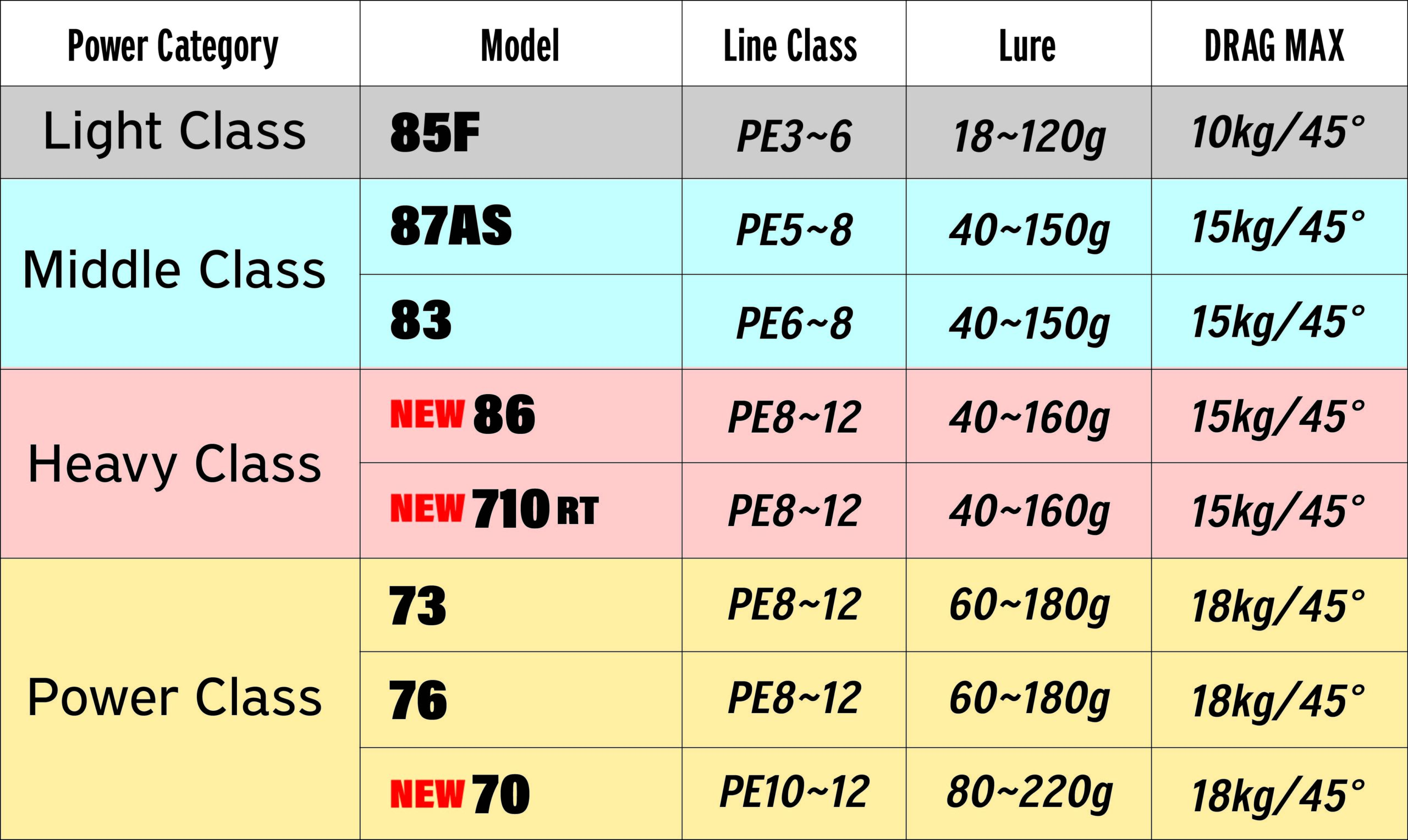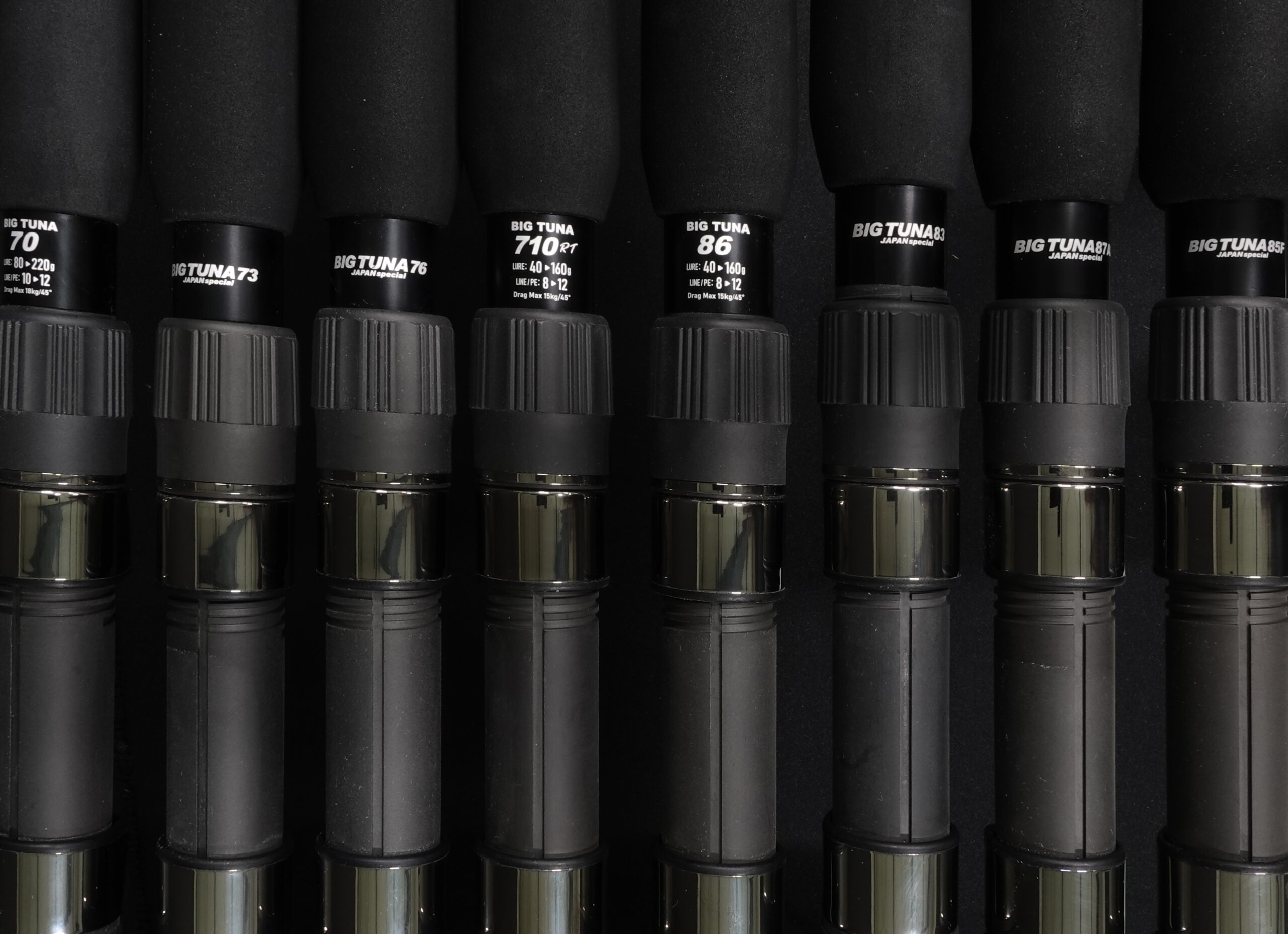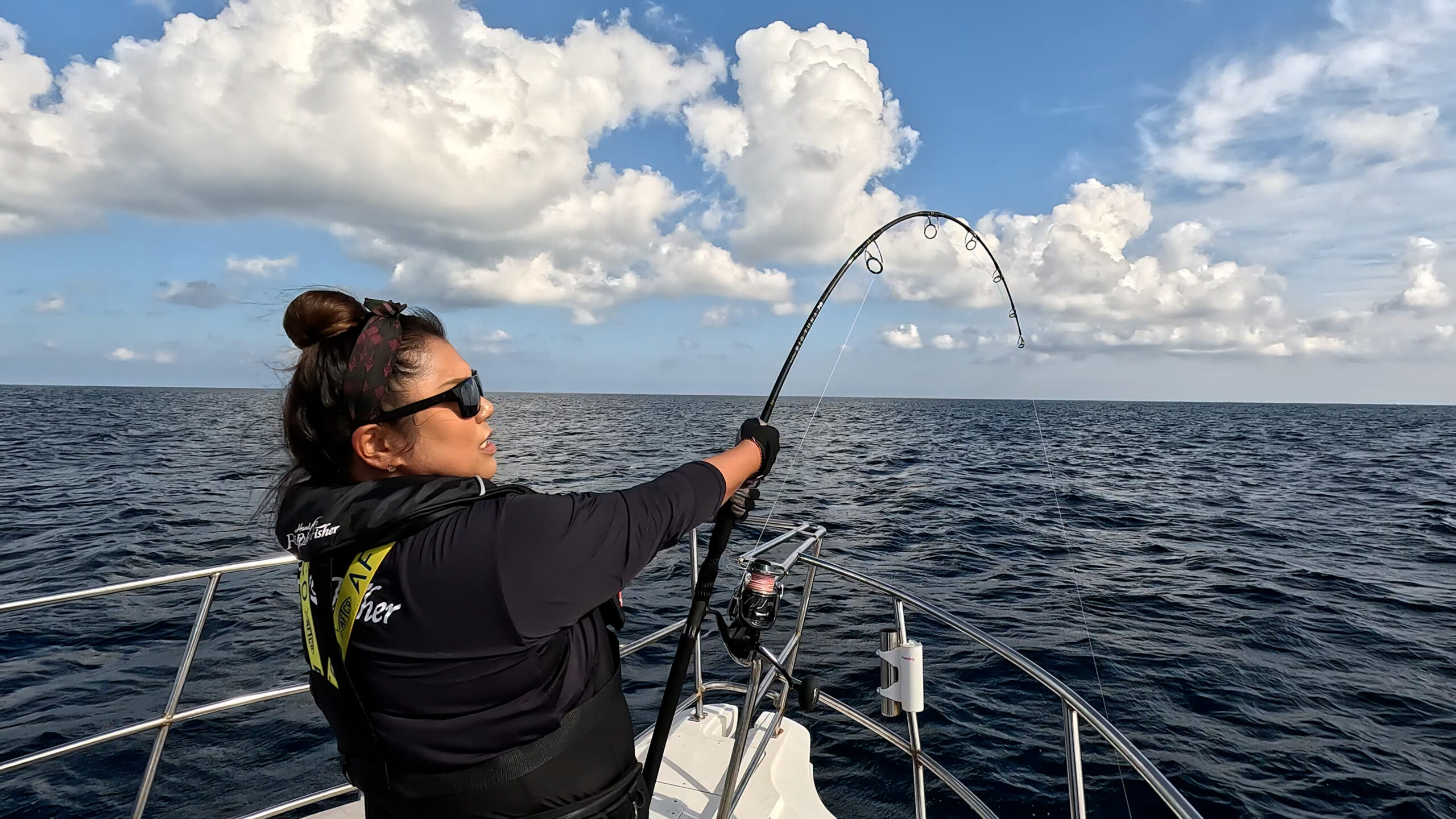Today we would like to introduce “BIGTUNA 70 JAPAN SP” which will be released in April 2024.

To summarize the concept of this model in one word, it is “the strongest rod developed with an emphasis on catching super large tuna.”
What you are concerned about is the power category classification.
We will explain where it falls into the BIGTUNA series.
The BIGTUNA series is divided into four categories: “Light, Middle, Heavy, and Power.”
The applicable models are as follows.
 ①Light Class(Applicable model: 85F)
①Light Class(Applicable model: 85F)
The class is selected as the first fishing rod for anglers targeting tuna.

②Middle Class(Applicable model:87AS・83)
A popular class for targeting yellowfin tuna and medium-sized tuna that become active in the summer.

③Heavy Class (Applicable model:710RT・86)
This class is easy to use in situations where the size of the tuna in the sea area is mixed from medium to large, and you cannot choose the tuna’s size.

④Power Class (Applicable model:73・76・70)
A class for targeting large to super large bluefin tuna using large lures.
“BIGTUNA 70 JAPAN SP” falls under the fourth “power class”, and in the same category, there are “BIGTUNA 73” and “BIGTUNA 76”, which caught 290kg of bluefin tuna last year.
The spec comparison is as below⇩


*The rod design has changed from BIGTUNA 86, 710RT, and 70, which were released in 2024.
The specs are engraved on the spacer part on the reel seat.
Several years have passed since many bluefin tuna weighing over 200 kg have been seen in Japan, and some anglers are gradually establishing strategies to catch the fish after a hit.
Additionally, we are pleased to report that in recent years we have received an increasing number of users reporting that they have caught large and extremely large tuna using this series of rods.
Still, for those who have never used a rod in this category before, it is normal to hesitate just hearing about the “strongest rod” or “fighting with giant tuna.”
Also, since people have different personalities (differences in physique, physical strength, and muscle strength), and in addition, there are anglers with different skills, we believe that it is virtually impossible to match all anglers with one rod.
Because this is a rod that aims to catch fish that exceed their limits, we offer a lineup of three models with different characteristics to widen the range of options available to anglers.
<Cast>
Regarding the casting distance, if you use a lure of around 200mm/100g to 250mm/150g, which is commonly used in this class, the casting distance will be about the same.
When comparing these two models, please focus on the fighting style.
<Fight>
73 has strong tension in the belly part, and among the short-length BIGTUNA, the bending point is on the tip side. So the speed from when the rod bends until it recovers feels faster this is a rod that requires a speedy fighting style.
Therefore, it requires a certain physique and strength that allows you to bend the rod to a certain extent, but it will be a strong weapon for anglers who are suited to this. 70 goes into the belly part smoothly, and the more the load is applied, the more the bending point shifts to the hand side, so it is a very easy rod for anglers with a general physique and strength.
<Cast>
Regarding casting distance, the 76 is more advantageous when using lures of around 200mm/100g to 250mm/150g, which are commonly used in this class.
76 allows you to make long casts by taking advantage of its length and keeping in mind its large swing form.
76 is recommended for areas where it is necessary to lure out or where it is not possible to bring the ship close to the boiling of tuna.
70 is designed with an emphasis on fights, so it is not suitable for lures that require long casts.
We recommend 70 for those who want to emphasize the fight after hooking, in waters where long-distance casting is not required, or when the distance to the target is relatively short.
<Fight>
Regarding the fight, both models bend similarly. Since the 70 is shorter, the bending fulcrum is closer to the hand, making it easier to fight than the 76.
When comparing these two models, it is important to choose whether you want distance or fight based on the fish conditions and style of the area you are going to.
As mentioned above, the reason why the 70 is said to be the strongest is that even though it has superior breaking strength compared to other power-class rods, it is very easy to fight.

I have mentioned the benefits of short lengths in terms of reducing the load when setting up the rod, but what about other fighting methods?
As mentioned above, some anglers are gradually establishing a method for fighting large and super-large tuna.
・Straight pumping from start to finish after hook-on
・After a hook on, At first, use a high stick rod and bring the tuna under high load, then straight pump after bringing it to the gunwale.
・After a hook on, At first, use straight pumping to bring the tuna, and once it gets close, high-stick the rod and float it all at once.
*High-stick the rod when the tuna comes too close to the gunwale, which may cause damage. Please be careful.
There are various methods, but the one that is commonly talked about is straight pumping.
This fight also shows the intention for choosing 7ft.
As an example, we thought that 7ft is the best length as the minimum length that will allow you to dodge various obstacles such as casting rails during fights such as raising/laying down the rod.
When dodging obstacles, if the rod length is too long, the rod will bend and you will have to lift it higher than the obstacle.
Fights in this class require a considerable amount of drag, so this one small motion will drain away your physical strength.
Furthermore, the burden on the angler will further increase as the bending point becomes further away.
On the other hand, if it is too short length rod when the tuna starts turning around on the gunwale, the tuna will enter the bottom of the boat, increasing the risk of rod breakage and line breakage due to the boat, making it difficult to fight.
The best fighting method varies depending on the angler.
After considering a length that would be easy to use while responding to the various fighting methods of anglers, we decided on the 7ft length.
At Ripple Fisher, we believe that by choosing the rod and fishing method that best suits you, you can pave the way to your target size without restricting anglers’ unique strategies.
(Of course, the larger the target size, the more important it becomes to improve muscle strength/physical strength and technique.)
Please choose the model that matches you and achieve your target size!
(Message from the factory)
In one corner of Ripple Fisher’s factory, photos of tuna sent by customers are printed on small pieces of paper and pasted.
Those photos are catches were a dream come true for our customers.
It is a great source of pride for them to see the rods that they carefully craft and send out, one by one, going through their hands and making their dreams come true together with the anglers.
Catching tuna is a big dream for anglers, so we take our products seriously, and we work hard every day to make sure that you can trust Ripple Fisher rods.
Your dream is ours as well.













